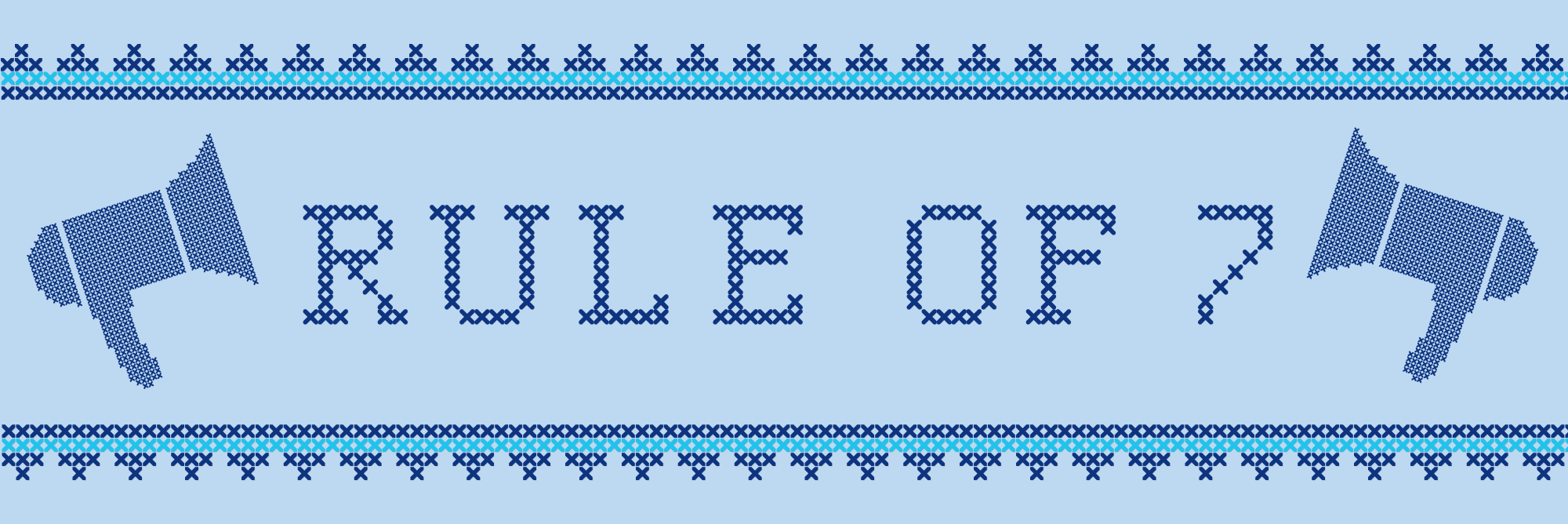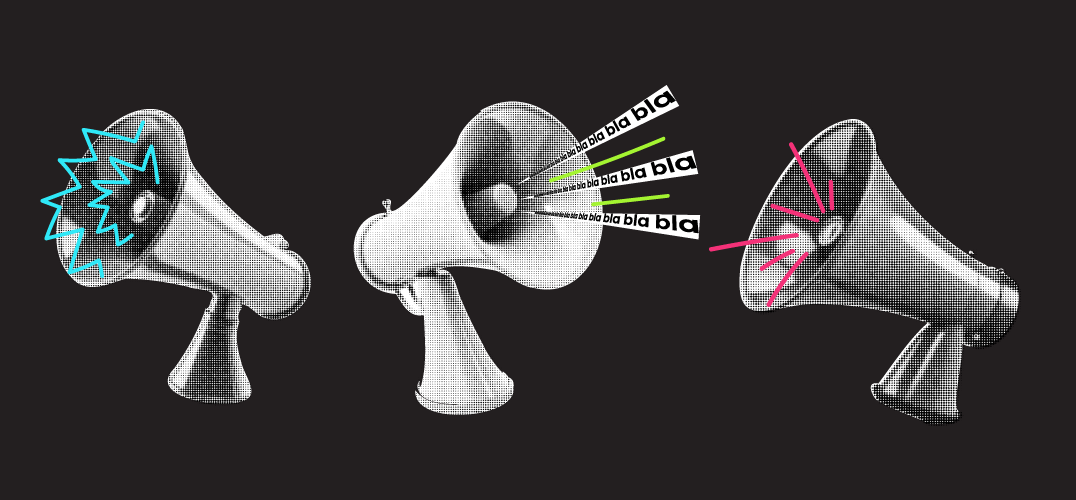
There’s an age-old proverb in marketing called “The Rule of Seven.” It goes something like this: A prospect needs to see or hear your marketing message at least seven times before they take action and buy from you.
Of course, there are exceptions to this maxim.
One example is when you’re standing in line at the grocery store, and a Reese’s peanut butter cup catches your eye. Maybe you’re a little tired, stressed and — I’ll just say it — vulnerable. And in that moment, maybe it feels like that Reese’s peanut butter cup is staring deep into your soul — calling out to you as if to say, “I’m the only one who truly understands you.” Is it merely coincidence that the two of you are here, now, in this place — or is it fate? I think not! Inevitably, you succumb to its siren song. You surrender to your passion, abandoning all inhibitions and tearing open the wrapper before you even present your courtesy card to the cashier … sorry, I’m spiraling.
That’s an example of an impulse purchase (or so I’ve heard).
For this discussion, however, we’re talking about high-value B2B products and services. These types of purchases are far more complex than buying a pack of gum at the checkout counter. Often, they require buy-in from multiple stakeholders, and the decision-making process could take months (or even years). From a brand marketer’s perspective, the fundamental challenge is crafting and delivering targeted marketing messages that resonate with potential customers at every stage of the buyer’s journey. And that’s where the Rule of Seven comes in.
In this age of information overload, those repeat interactions espoused in the Rule of Seven are more important than ever.
“Just because someone matches your target buyer persona doesn’t mean they’re ready to buy your product or service right away,” Jonathan Hedger, founder and director of Amplify Digital Marketing, explains in a blog post. “It may just be that at this moment in time, their pain isn’t great enough for them to prioritize a purchase.
“You need to maintain visibility, remind prospects of your existence and ensure that when that pain point reaches a threshold, you are the company they think about — not one of your competitors.”
Still, is the Rule of Seven purely about repetition? Is it simply a matter of being the squeaky wheel that eventually gets the grease? Not exactly. To stand out in today’s omnichannel marketing world, you’ll need to employ some creative strategies for interacting with your target audience. Here are seven messaging strategies to help drive conversions — and grow your business.
Product Placement
Product placement has been around for a long time. But it wasn’t until 1982 that marketers truly grasped its potential to have an otherworldly impact on brand recognition and sales. When Reese’s Pieces made a cameo appearance in “E.T. the Extraterrestrial,” sales of Reese’s Pieces went to the moon within a month of the film’s release. No, I’m not obsessed with Reese’s products, and yes, mentioning Reese’s candies twice in this blog post would be a viable example of product placement if the company had asked me to do it (which they didn’t, but I probably wouldn’t have said no if they did). My larger point is this: Product-placement spend has grown exponentially since “ET” hit the big screen. In 2021, businesses worldwide spent a whopping $23 billion on product placement, according to Statista. Of that, $16 billion went to product placement on TV, while $2.8 billion went to film and $2 billion went to digital media. Why do they do it? Because it works!
Branded Entertainment
In the beginning, there was product placement. Today, marketers can take brand exposure to an entirely new level with branded entertainment. Perhaps the most obvious example of branded entertainment is “The LEGO Movie.” But branded entertainment can take the form of a sponsored article, a podcast, a short film, a TV show, a documentary, a video game or something that hasn’t even been imagined yet. Oh, and those brand logos that grace the hoods and doors of every NASCAR vehicle —you might consider that branded entertainment too.
Industry Events
Looking for a captive audience of potential buyers who just so happen to work in the very industry that you’re targeting? Well, look no further than your industry’s trade associations. Business conferences, product expos, symposiums, networking receptions and other events are cash cows for these associations — and fertile ground for your industry-specific marketing messages.
Marketing opportunities abound at industry events. Depending on your sponsorship commitment, you could be one of several (or many) title sponsors of an event, or you could take it to the next level and have a USB flash drive with your latest product information included in every tote bag given to attendees at the registration desk. Or you can be the belle of the ball by sponsoring a coffee break or lunch. What does that look like? At an educational conference I attended recently, the lunch sponsor played a short video — a commercial, essentially — on two giant screens just prior to lunch being served. Talk about serving up a targeted marketing message!
Repurposing Content
If you’re suffering from a case of sticker shock after reading the first few strategies, let’s shift gears a bit (quite a bit). For many marketers, a small percentage of their content — whether it’s a blog post, video, social media message or something else — might drive the majority of conversions for their business. Recreating that magical piece of content might seem like trying to capture lightning in a bottle. But you don’t have to do that. Since you already know what works, there’s no need to reinvent the wheel. Consider repurposing that high-performing blog post into a podcast, webinar, guide or video series. If it’s a series of popular blog posts, each post could become a chapter in an e-book that provides valuable information to your target audience. When you’re working with limited resources, this is a great way to maximize your marketing efforts and expand the reach of your most successful content.
Trade Publications
Back in the day, there was a B2B print magazine for every industry niche under the sun. With the shift to all things digital, there aren’t as many trade magazines being printed these days — but they’re still out there. Contributing high-value (non-commercial) editorial content to a leading trade publication is an often-overlooked marketing strategy that can help build your reputation as an industry thought leader. Not only does it showcase your deep expertise on important industry topics, but it also sends a message that you care about more than just making a buck. All of that builds trust in your brand.
If your industry’s trade magazine decided to stop printing hard copies, don’t despair — they likely maintain a content-rich website that offers plenty of opportunities to connect with potential customers and perhaps reach an even wider audience. Oh, and the best part? It’s free. All it costs you is your time!
Go Behind the Scenes
Another strategy for building trust with your audience is peeling back the layers of the proverbial onion and inviting potential customers to see the heart of your business. A popular approach to behind-the-scenes marketing is creating profiles of your team members and posting them on social media. These get-to-know-you posts show the authentic, human side of your business. Pro tip: You can do the same thing with your customers!
Day-in-the-life posts can be compelling as well. Behind-the-scenes marketing also could take the form of a video that “walks” the floor of your manufacturing facility, showcasing your state-of-the-art production processes and featuring interviews with loyal employees. Or you could post a video or photo gallery of employees volunteering in the community — a powerful example of your company’s culture and values in action.
LinkedIn Groups
LinkedIn has built a vibrant community of business professionals and thought leaders, and it’s teeming with industry-specific subgroups that can give you direct access to potential customers. If you’re not involved in a LinkedIn group for your industry sector, join one now. Share news, post helpful content, engage in thoughtful discussions and take advantage of this free relationship-building tool.
Conclusion
Admittedly, I’ve barely scratched the surface of what’s possible. Creativity is the key here! While there are best practices in marketing, that doesn’t mean you have to follow a strict set of rules — or any rules (although understanding your buyer persona is a pretty important one).
Don’t be afraid to take risks. Most importantly, if you find yourself in a vulnerable state, and you happen to be waiting in line at the checkout counter, just remember that chocolate and peanut butter will make it all better. Unless you’re allergic to peanuts.

